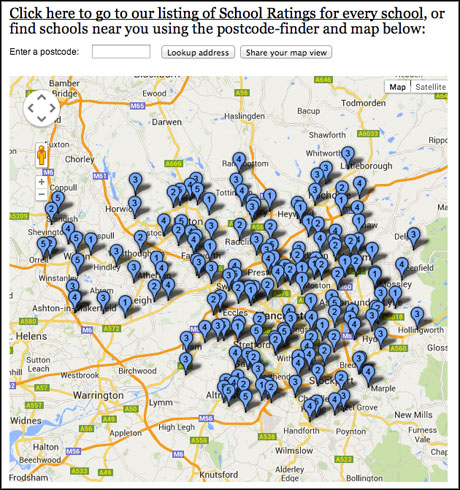
The Trinity Mirror data unit has created a searchable online database to compare state schools around the UK, as part of a new project to provide a more detailed annual analysis of schools for parents and readers.
The unit, which launched in late April, had previously created individual news pieces for regional publications, but this is the first time a project has been carried out for the whole group, according to David Ottewell, Trinity Mirror's head of data journalism.
"One of the roles of data journalism is in finding a way to put data together that makes it accessible," Ottewell told Journalims.co.uk. "Even though it's really just aggregating, it's doing so in a creative way which makes the data much more accessible for the people we're trying to serve – the readers."
The Real Schools Guide ran as a print supplement in the Saturday editions of a range of newspapers – Manchester Evening News, Wales Daily Post, Western Mail, South Wales Echo, Newcastle Chronicle, The Journal, Teesside Evening Gazette, Birmingham Mail, Coventry Telegraph and Liverpool Echo – and is accessible on each publication's website. The data will be updated every year to keep parents up to date with how local schools are performing.
"We've got the full, detailed data for every indicator that we've used," Ottewell said, "and automatically generated charts and graphs that show that data.
"It's all presented with a postcode-searchable map where you can type in your postcode. That will instantly show you the schools in your area, with pins stuck in them telling you the overall star rating. Then you can click through to get the full data on each one."
Ottewell said league tables normally use GCSE results to rank schools but, while important, these were "not the only measure". The 24 measures for schools in England – from truancy rates to the pupil/teacher ratio – were divided into four broad categories. These categories – attainment, teaching, behaviour and outcomes – were given weightings based on their perceived importance. In Wales, 21 measures were used because of differences in data sets, said Ottewell.
Schools are then given an "overall star rating" out of five which is displayed on the map for each regional publication.

A screenshot of the schools map from the Manchester Evening News
Claire Miller, senior data journalist at Trinity Mirror, led the project and was "fundamental in bringing it to fruition", said Ottewell.
The data included in the study is regularly published by various authorities and government departments but is rarely collected together, Ottewell said. With the study, he hoped to paint a clearer picture for parents about the different criteria that can influence a school's ranking and collate the data in one place.
"I think data journalism has a real role to play in telling people something about their community," he said. "It might not be what you traditionally think of as news – aggregating schools data to give a league table of every state school – but it tells our readers something really important about their community."
Ottewell has divided the Trinity Mirror data unit into two sections which focus on "news" or "resources", he said. The news section focuses on producing stories for the Trinity Mirror group, but the resources section can be more community-oriented, he said.
"This kind of approach – aggregating data – obviously isn't just something that can be applied to schools," Ottewell said, "it can be applied to various other things that matter to a community, so we're certainly looking at doing other versions of this kind of thing, other data aggregation projects."
Update: This article has been updated to highlight Claire Mller's role in the project.
Free daily newsletter
If you like our news and feature articles, you can sign up to receive our free daily (Mon-Fri) email newsletter (mobile friendly).









